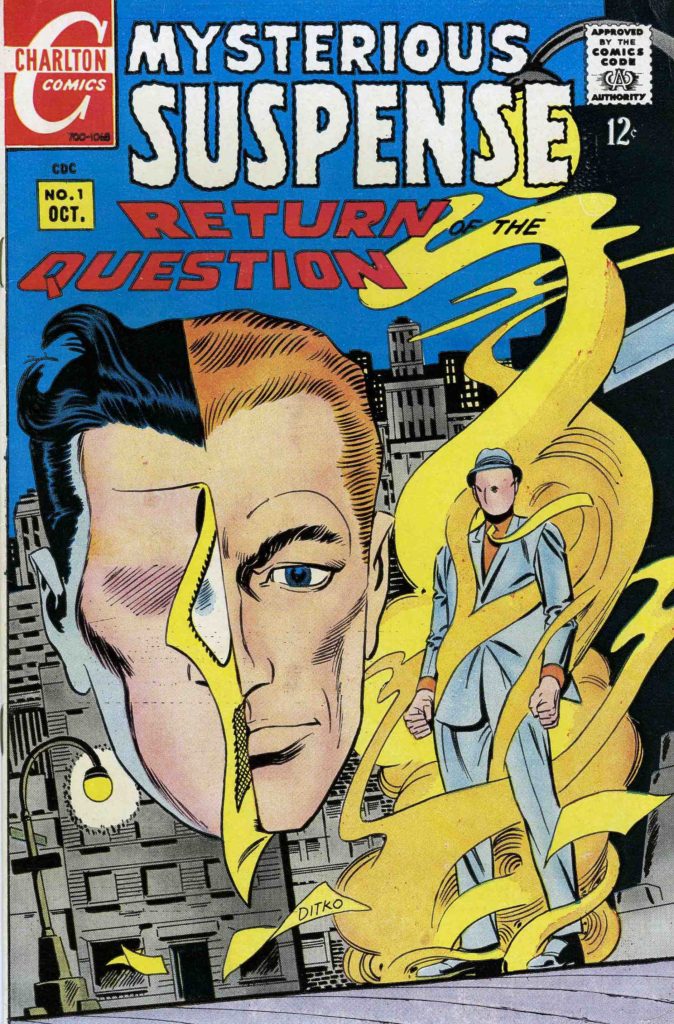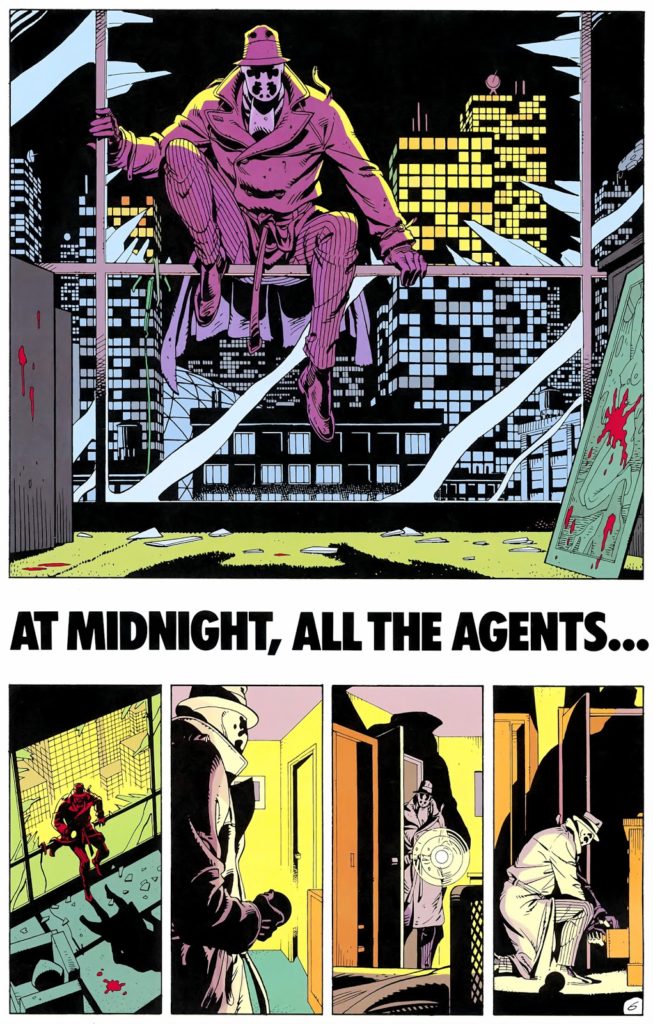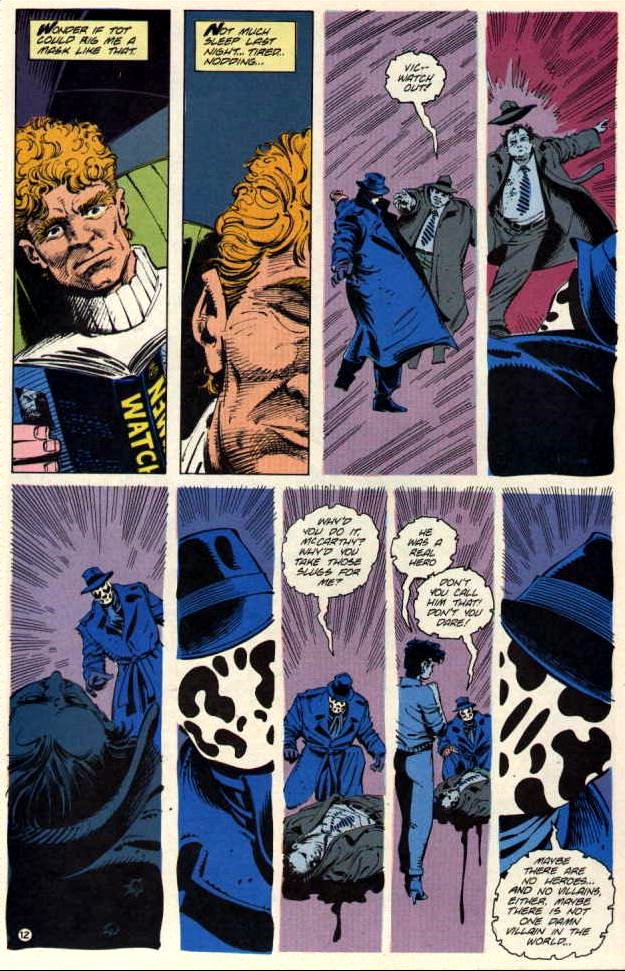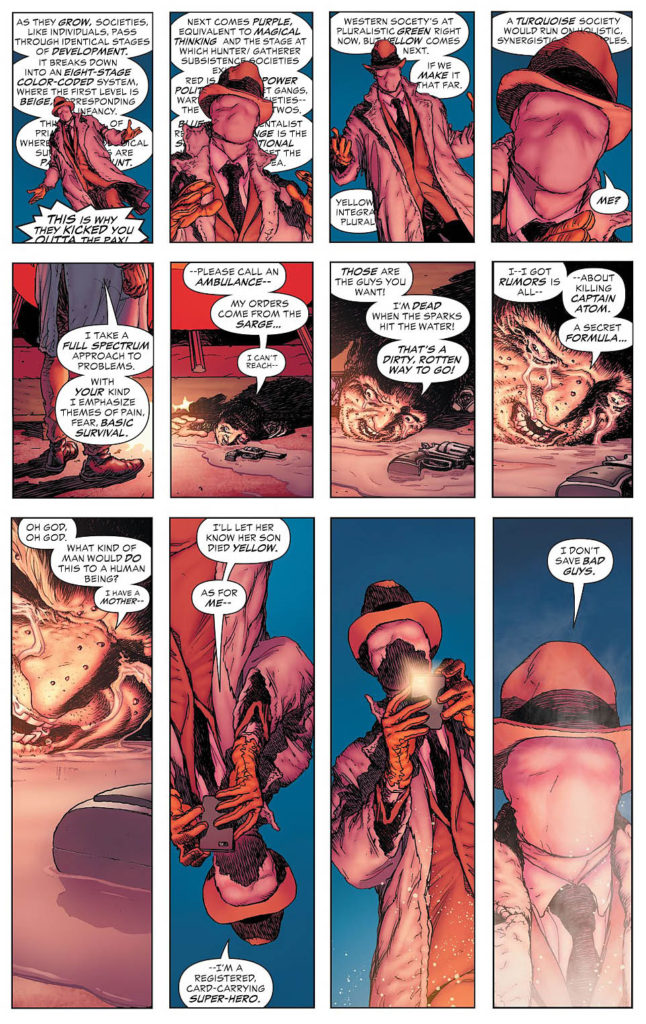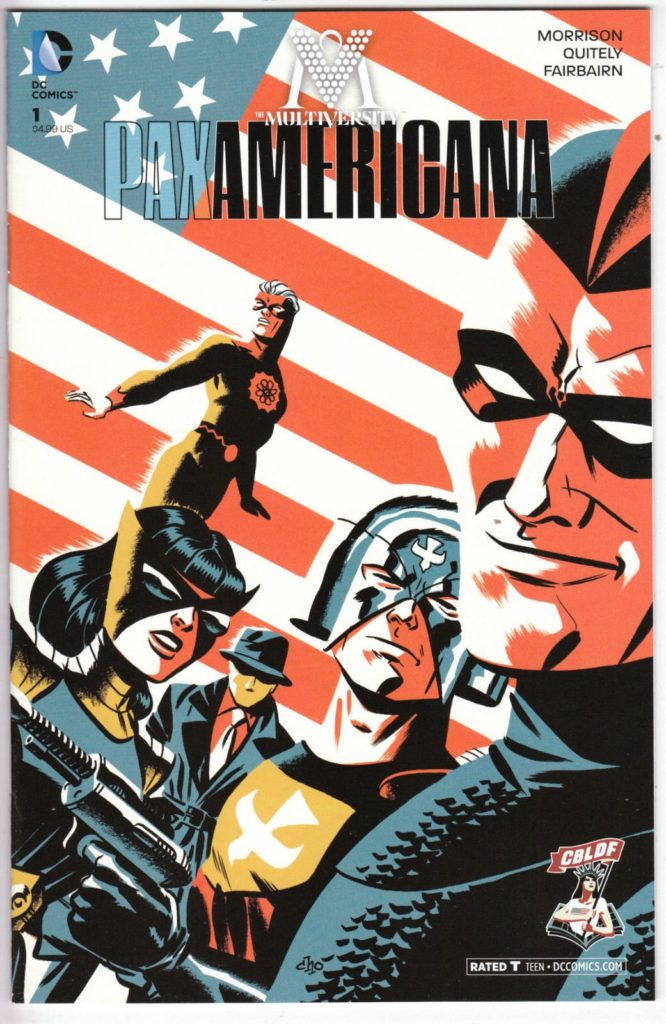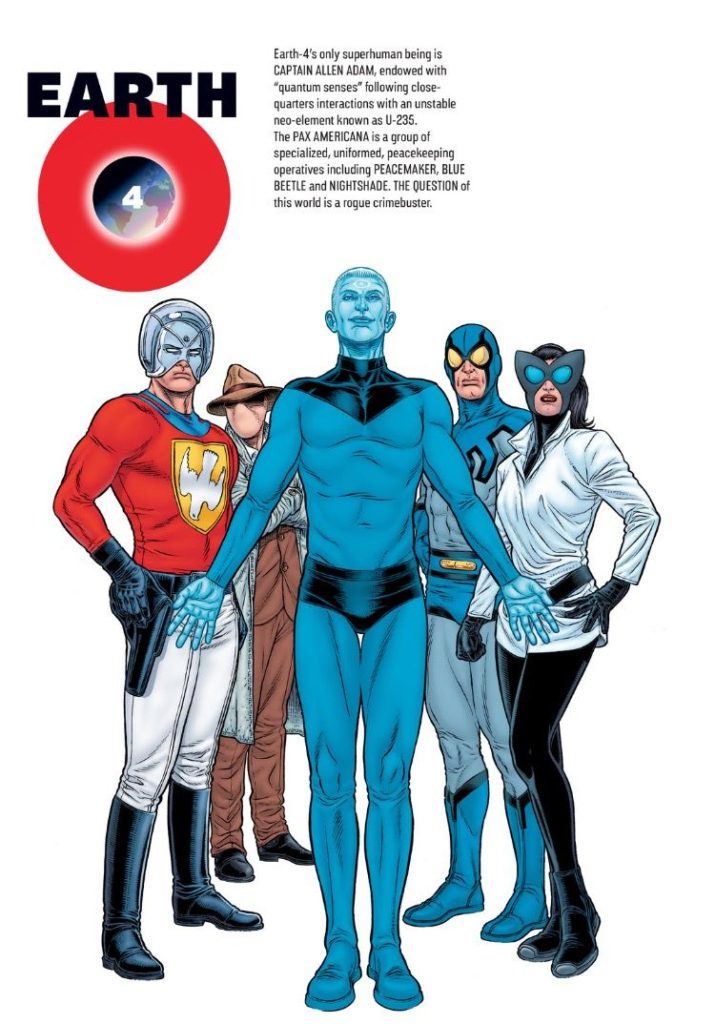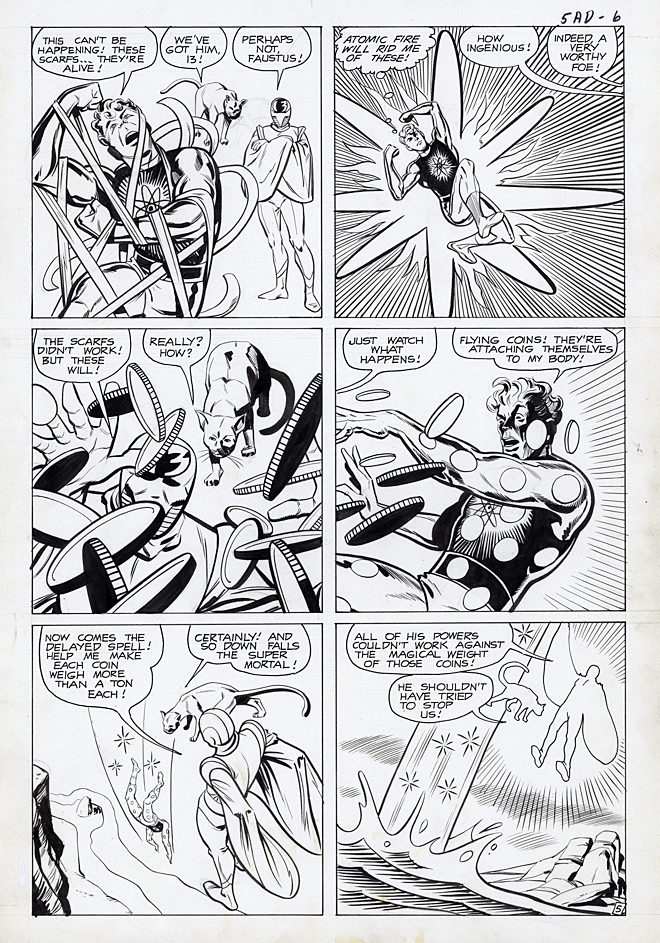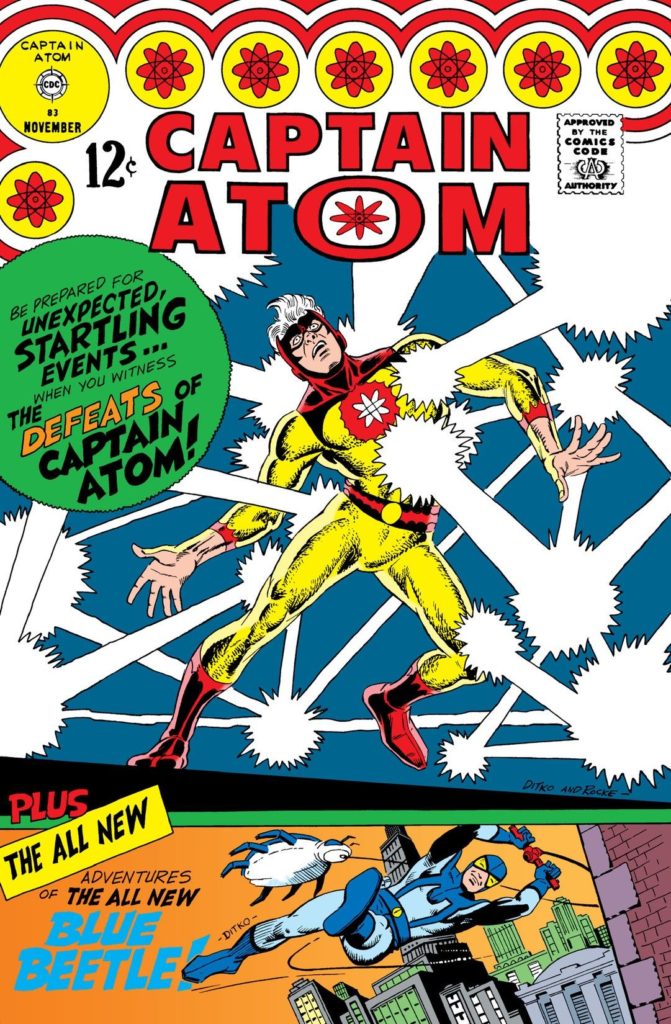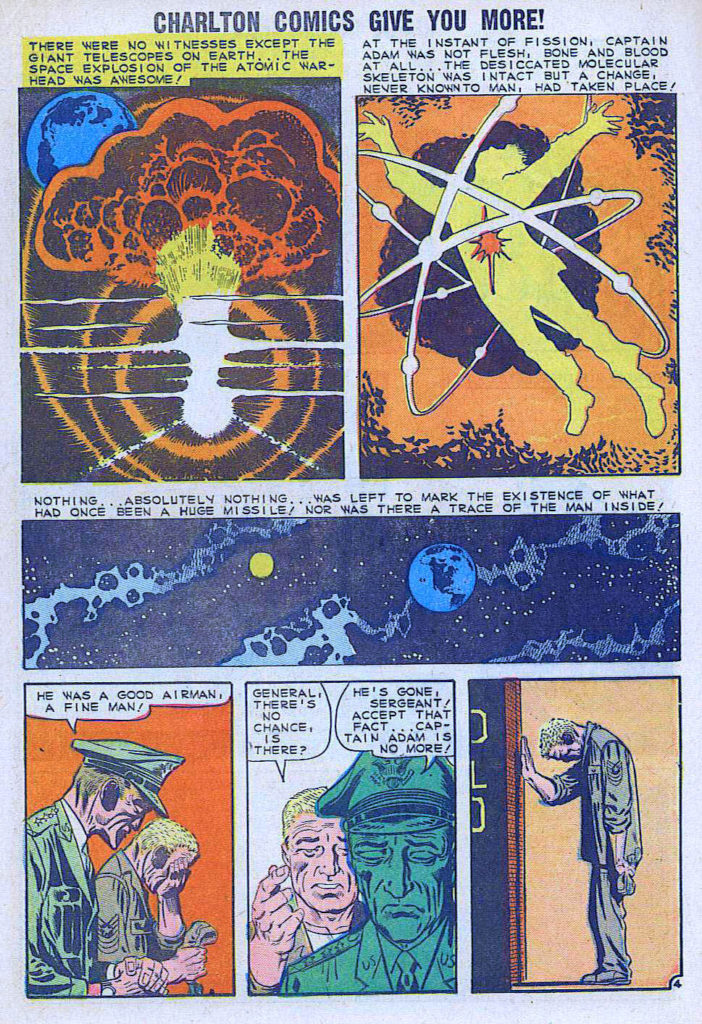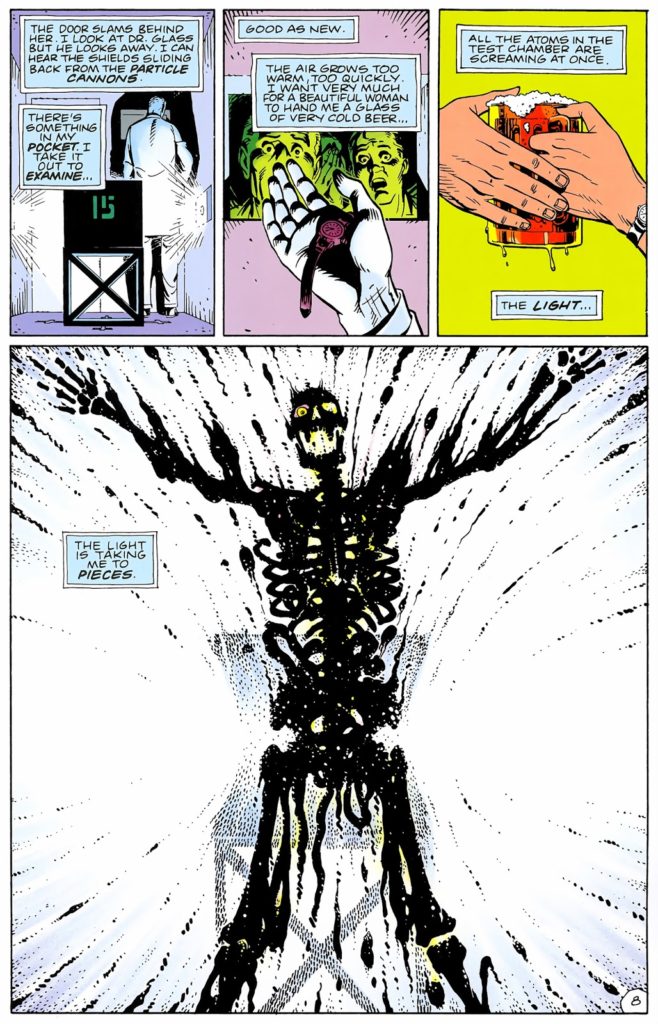Denys Cowan and Bill Sienkiewicz — Meta Human
The Question #37, March 2010
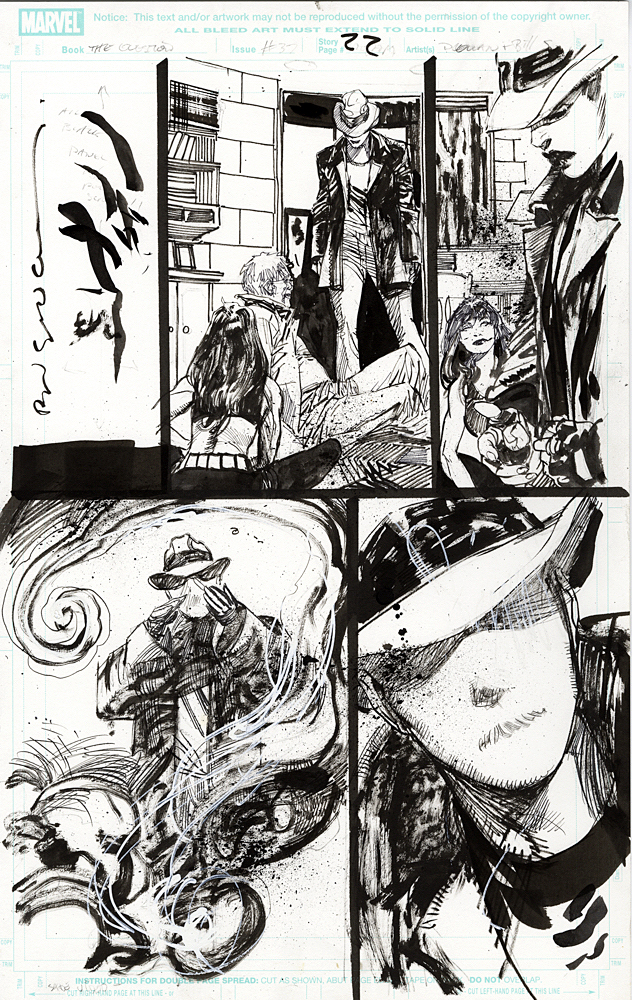
HBO’s Watchmen was an unexpected television smash of 2019, and it has landed on a number of best of lists. This series of posts explores the Watchmen characters, which have roots in the more traditional superhero universe.
Steve Ditko creates the iconic and mature character Mr. A (with moral absolutism as his trademark) in 1967 for the prozine Witzend, published by Wally Wood.
A few months later, Ditko tones down the violence and moral absolutism just a bit, and creates a more comics-code friendly character, The Question, for Charlton Comics.
In 1983, DC acquires the Charlton superheroes from the financially strapped publisher. The characters first appear in 1985’s mega-event Crisis on Infinite Earths as inhabitants of “Earth Four.”
In 1986 Alan Moore retools the Question/Mr. A as Rorschach for Watchmen.
Even before Watchmen concludes, the Question receives his first own ongoing (and very mature) DC series by Denny O’Neil and Denys Cowan.
In issue #17 of that series, the Question (Vic Sage) reads a Watchmen comic and dreams that he is Rorschach.
A most meta series of events.
Ultimately, The Question series ran 36 issues, ending in 1990. 20 years later, DC added an extra issue as part of the Blackest Night storyline that brought back additional issues of previously cancelled comics.
Which brings us here: In this issue, Bill Sienkiewicz, who drew or inked nearly all of the covers for that original series, inks an entire issue for the first time over Denys Cowan’s dynamic pencils. (Cowan had penciled all but one original issue.)
This is the last page (Renee Montoya is The Question here) from the story. But, of course, certainly not the last of The Question. As he/she has already appeared a few times since, most recently notably in Grant Morrison’s Multiversity: Pax Americana on a new version of Earth Four.
And, in this universe, Vic Sage sounds a lot like… Rorschach.
And the circle continues….





